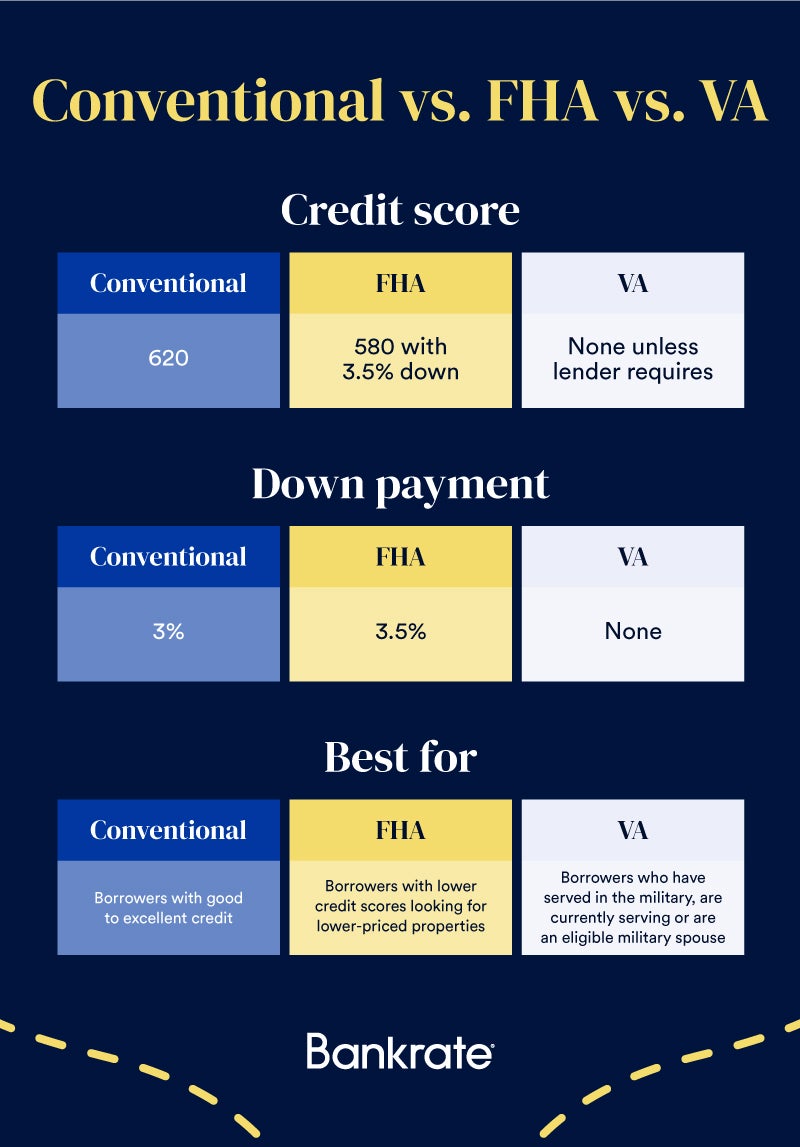We are an independent, advertising-supported comparison service. Our mission is to empower you to make more informed financial decisions by giving you access to interactive tools and financial calculators, publishing original and unbiased content, allowing you to conduct free research and information comparisons, and publishing original and objective content. Partnerships between Bankrate and issuers like American Express, Bank of America, Capital One, Chase, Citi, and Discover are just a few examples.
How We Make Money
The offers that show up on this website are from businesses that pay us. This compensation may have an effect on the placement of products on this website and other factors, such as the order in which they may appear within listing categories. However, the information we publish or the user reviews you see on this website are unaffected by this compensation. We exclude the full range of businesses and financial opportunities that may be available to you.

At Bankrate, we take the accuracy of our content seriously.
“Expert verified” signifies that our Financial Review Board meticulously examined the content for precision and coherence. The Review Board is a group of financial professionals whose goal it is to maintain the objectivity and balance of our content.
Their evaluations hold us accountable for disseminating reliable and high-quality content.
At Bankrate, we work to guide you toward making more informed financial decisions. Although we follow strict guidelines, this post may mention products from our partners. Heres an explanation for . Bankrate logo.
Bankrate, which was established in 1976, has a long history of assisting people in making wise financial decisions. By demystifying the financial decision-making process and empowering people to know what to do next, we’ve maintained this reputation for more than 40 years.
You can trust that Bankrate adheres to a strict editorial policy and is acting in your best interests. Our content is written by highly qualified professionals, and it is edited by specialists in the fields in which it is published, ensuring that it is impartial, truthful, and reliable.
For you to feel confident when making decisions as a homebuyer and homeowner, our mortgage reporters and editors concentrate on the topics that consumers care about most, such as the most recent rates, the top lenders, navigating the home-buying process, refinancing your mortgage, and more. Bankrate logo.
You can trust that Bankrate adheres to a strict editorial policy and is acting in your best interests. Our esteemed editors and reporters produce truthful and accurate content to assist you in making wise financial decisions.
We value your trust. Our editorial standards are in place to ensure that we fulfill our mission of giving readers accurate and unbiased information. To make sure the information you’re reading is accurate, our editors and reporters conduct extensive fact-checking on editorial content. Our editorial team and advertisers are separated by a wall that we uphold. Our editorial staff does not get paid directly by our advertisers.
The editorial staff at Bankrate writes on behalf of YOU, the reader. Our aim is to provide you with the best guidance so that you can make wise decisions regarding your personal finances. To prevent advertisers from influencing our editorial content, we adhere to strict guidelines. Our editorial staff is not paid directly by advertisers, and all of our content is meticulously fact-checked to ensure accuracy. So, whether you’re reading an article or a review, you can be sure that the information is reliable and trustworthy. Bankrate logo.
How we make money
You have money questions. Bankrate has answers. For more than 40 years, our experts have been assisting you in becoming financially savvy. We continuously work to give customers the knowledge and resources necessary to be successful in their financial endeavors.
You can rely on Bankrate’s editorial standards to produce truthful and accurate content. Our esteemed editors and reporters produce truthful and accurate content to assist you in making wise financial decisions. Our editorial team produces factual, unbiased content that isn’t influenced by our advertisers.
We are open and honest about how we earn money in order to provide you with high-quality content, affordable prices, and practical tools.
Bankrate. com is an independent, advertising-supported publisher and comparison service. We receive payment in exchange for the placement of sponsored goods and services on our website or when you click on specific links there. As a result, this compensation may affect the placement, timing, and order of products within listing categories. A product’s availability in your area or within your self-selected credit score range, among other things, may have an impact on how and where it appears on this site. Bankrate does not provide information on every financial or credit product or service, despite our efforts to do so.
You may feel as though you’re in a three-way conflict when choosing the best mortgage option for purchasing a home: conventional vs. FHA vs. VA. These home loan options don’t have a clear winner because each has its own requirements, benefits, and drawbacks. It all depends on your individual needs.
Conventional vs. FHA vs. VA loans
Conventional loans are typical mortgage products that can be easily obtained nationwide from banks, credit unions, and online lenders. Usually, borrowers with good or excellent credit can benefit from them. The Federal Housing Administration (FHA) backs these loans with government funding, and they typically have more lenient eligibility requirements than conventional loans. Additionally, the federal government guarantees VA loans through the U S. Department of Veterans Affairs (VA) and provide services for veterans, surviving spouses, and active-duty service members.
Prior to starting to compare loan programs, it’s crucial to be aware of the following three facts:

FHA loan vs. conventional loan
A key differentiator between conventional vs. A drawback of FHA loans is that a conventional loan requires a higher credit score than an FHA loan does. In general, borrowers with lower credit scores are better suited for FHA loans.
Another difference: If you take out a conventional loan with less than 20% down payment, you can cancel the private mortgage insurance (PMI) once you reach the 20% equity mark. Mortgage insurance premiums for FHA loans are annoying because they must be paid until you pay off the loan or switch to a conventional loan.
| CONVENTIONAL LOAN | FHA LOAN | |
|---|---|---|
| Minimum credit score | 620 | 500 with 10% down; 580 with 3.5% down |
| Maximum DTI ratio | 43% | Up to 50% |
| Minimum down payment | 3% (20% to avoid private mortgage insurance or PMI) | 3.5% with 580 credit score; 10% with 500-579 credit score |
| Mortgage insurance | Private mortgage insurance (PMI) if less than 20% down | 1.75% upfront FHA mortgage insurance (MIP) and annual MIP if less than 20% down |
| 2023 loan limits | $726,200 in most areas; $1,089,300 in high-priced areas | $472,030 in most areas; higher limits in high-priced areas and for multi-unit homes |
| Eligible properties | You can live in the home, or it can be an investment/rental property or second/vacation home | You must live in the home |
| Closing costs | Generally 2%-5% | Generally 2%-6% |
| Refinance options | Conventional rate-and-term refinance; conventional cash-out refinance | FHA simple refinance; FHA streamline refinance; FHA cash-out refinance |
| Interest rates | Current conventional loan rates | Current FHA loan rates |
VA loan vs. conventional loan
Veterans, military service members, and their spouses may be eligible for VA loans, which have one particularly noteworthy benefit: There is no requirement for a down payment. While you must obtain a certificate from the VA proving you have completed the necessary service requirements, meeting the other requirements is typically simpler than for a conventional loan. Some lenders also accept lower credit scores for VA loans.
Even though you don’t put any money down for a VA loan, you won’t have to pay mortgage insurance. However, there is a funding fee that varies depending on how much you put down and whether you’ve previously obtained a VA loan.
| CONVENTIONAL LOAN | VA LOAN | |
|---|---|---|
| Minimum credit score | 620 | None unless lender requires |
| Maximum DTI ratio | 43% | None, but 41% is standard |
| Minimum down payment | 3% (20% to avoid private mortgage insurance or PMI) | None |
| Mortgage insurance | Private mortgage insurance (PMI) if less than 20% down | 1.4%-3.6% VA funding fee, depending on down payment (if making) and usage |
| 2023 loan limits | $726,200 in most areas; $1,089,300 in high-priced areas | No limit unless borrower defaulted on or has more than one VA loan (if so, $726,200 in most areas; $1,089,300 in high-priced areas) |
| Eligible properties | You can live in the home, or it can be an investment/rental property or second/vacation home | You must live in the home |
| Closing costs | Generally 2%-5% | Generally 3%-5% |
| Refinance options | Conventional rate-and-term refinance; conventional cash-out refinance | VA Interest Rate Reduction Refinance Loan (IRRRL, also known as VA streamline refinance); VA cash-out refinance |
| Interest rates | Current conventional loan rates | Current VA loan rates |
FHA loan vs. VA loan
One feature unites VA loans and FHA loans: both are insured by the government. However, if you meet the requirements for a VA loan, you’ll find better terms, greater purchasing power, and fewer fees with a VA loan as opposed to other types of loans. an FHA loan. By choosing a VA loan, you won’t have to pay lifetime mortgage insurance premiums, so your expenses will probably be lower. However, when purchasing a home, it is important to weigh all of your options.
| FHA LOAN | VA LOAN | |
|---|---|---|
| Minimum credit score | 500 with 10% down; 580 with 3.5% down | None unless lender requires |
| Maximum DTI ratio | Up to 50% | None, but 41% is standard |
| Minimum down payment | 3.5% with 580 credit score; 10% with 500-579 credit score | None |
| Mortgage insurance | 1.75% upfront FHA mortgage insurance (MIP) and annual MIP if less than 20% down | 1.4%-3.6% VA funding fee, depending on down payment (if making) and usage |
| 2023 loan limits | $472,030 in most areas; higher limits in high-priced areas and for multi-unit homes | No limit unless borrower defaulted on or has more than one VA loan (if so, $726,200 in most areas; $1,089,300 in high-priced areas) |
| Eligible properties | You must live in the home | You must live in the home |
| Closing costs | Generally 2%-6% | Generally 3%-5% |
| Refinance options | FHA simple refinance; FHA streamline refinance; FHA cash-out refinance | VA Interest Rate Reduction Refinance Loan (IRRRL, also known as VA streamline refinance); VA cash-out refinance |
| Interest rates | Current FHA loan rates | Current VA loan rates |
Which is better: Conventional, FHA or VA?
When weighing the benefits and drawbacks of a conventional vs. FHA vs. VA loan. Conventional mortgages typically present fewer challenges if you meet the requirements than FHA or VA mortgages, which may take more time to process.
Keep in mind that FHA and VA loans can be ideal for borrowers with lower credit scores, whereas conventional loans are typically better suited for borrowers with higher credit scores.
A conventional loan requires mortgage insurance payments, similar to an FHA loan, but only if you put less than 20% down. Additionally, the payments may be stopped once your equity reaches a certain level. You can’t get rid of MIP with an FHA loan unless you refinance or pay off the mortgage. There is no requirement for mortgage insurance with a VA loan, but you will have to pay a funding fee based on the loan amount.
The fact that refinancing an FHA or VA loan may be simpler than refinancing a conventional mortgage should also be noted. Both the FHA and the VA provide streamlined refinancing, which enables you to skip some of the process’s steps like providing financial information or awaiting an appraisal.
Now that you’ve completed Bankrate’s conventional vs. FHA vs. Find out more to determine the type of financing that will best suit your lifestyle with the VA crash course:




FAQ
Do FHA loans have points?
FHA home loan borrowers are permitted to pay mortgage points, which are fees paid to the lender at closing in order to lower their loan’s interest rate, just like many privately insured mortgage borrowers. Typically, one point is equal to 1% of the loan’s total amount.
Which is a better loan FHA or conventional?
If you have good or excellent credit, a conventional loan is frequently preferable because it will result in lower mortgage rates and PMI costs. However, if your credit score is in the high 500s or low 600s, an FHA loan may be the best option. For lower-credit borrowers, FHA is often the cheaper option.
What are points on a loan?
In essence, mortgage points are a type of prepaid interest that you can choose to pay in advance in exchange for a lower interest rate and smaller monthly payments (this process is referred to as “buying down” your interest rate). A lender may occasionally give you the choice to pay points in addition to your closing costs.
How many points are typical on a loan?
According to Freddie Mac’s weekly survey of lenders, for the past five years or so, the average number of points reported on a 30-year fixed conventional loan has ranged between 0 and 1. 5 – 0. 6 points. It’s critical to remember that in order to get a lower rate, you don’t have to pay for a full point.
